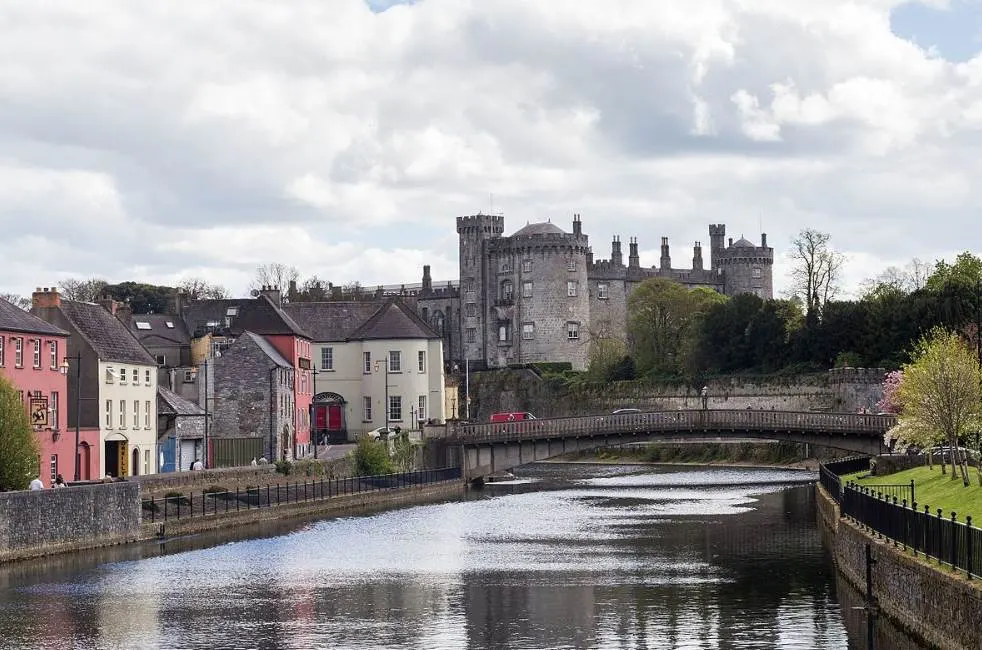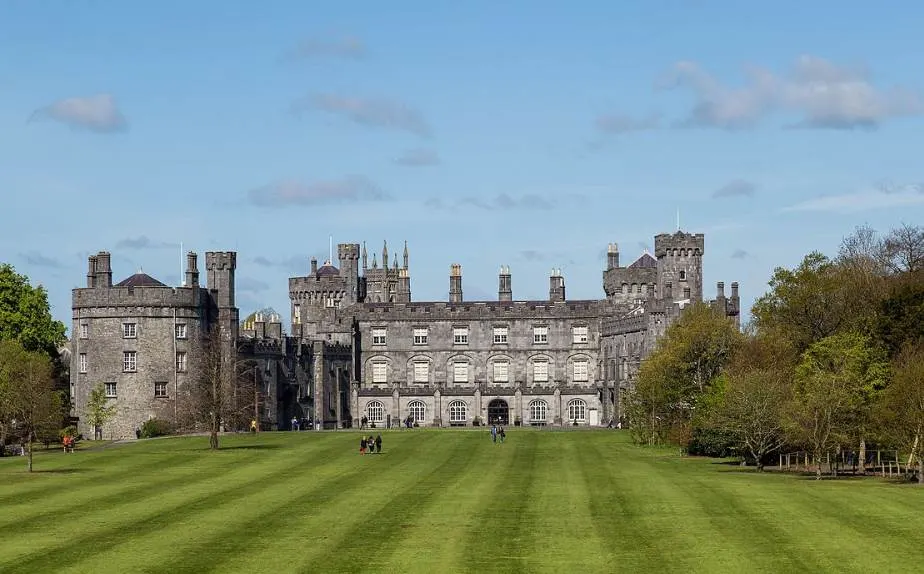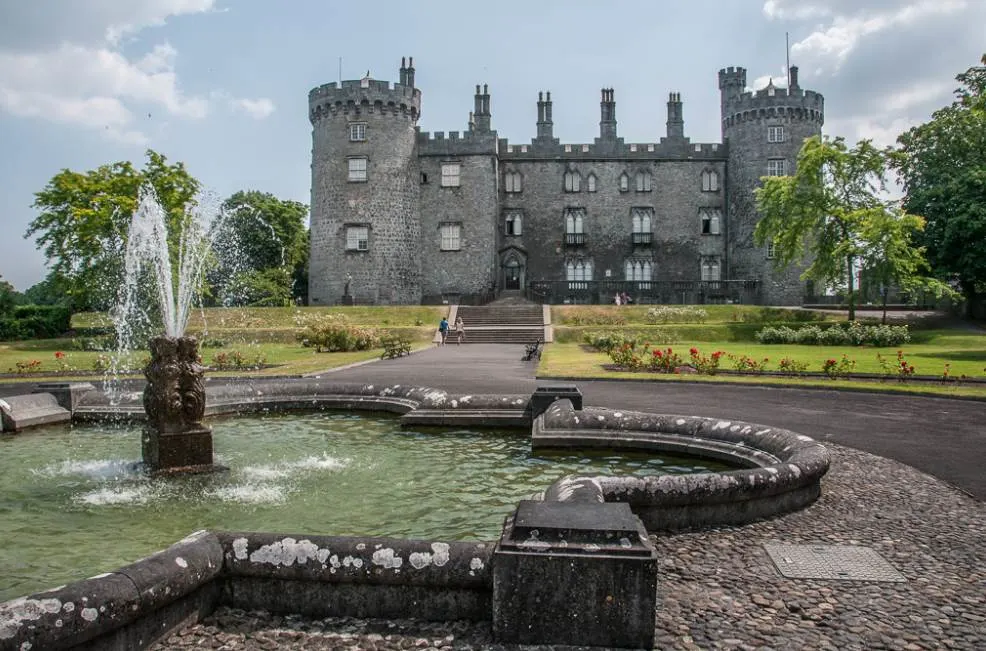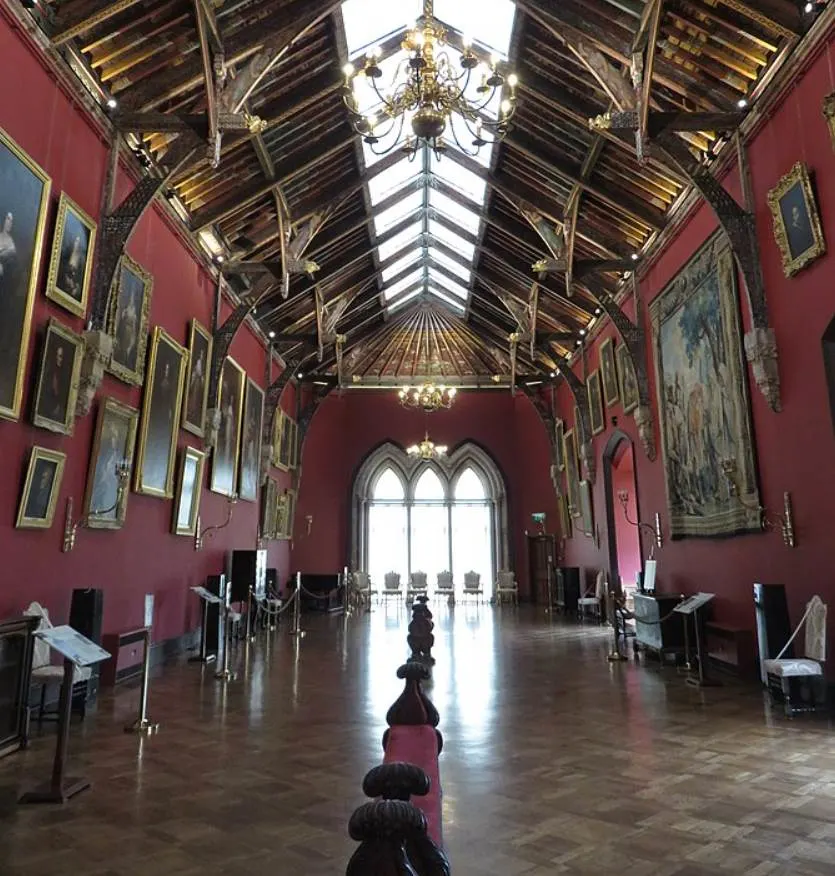Just about every castle in Europe that was constructed during the Middle Ages was a fortified stronghold.
Very few castles emphasize this sense of power more than this remarkable structure in the southeastern part of Ireland.
Let’s take a closer look at some of the most interesting facts about Kilkenny Castle, a medieval stronghold that has been turned into a popular tourist attraction.
1. It was named after the town it is located in
Kilkenny Castle is the main attraction of the small medieval town of Kilkenny. This town is situated in the Eastern and Midland Region and has a population of just below 30,000 inhabitants.
The castle isn’t the only tourist attraction in the town, though. It’s also home to several other historic buildings which makes it a popular tourist destination.
Some of these are St Canice’s Cathedral and round tower, the Rothe House, the Shee Alms House, and St. Mary’s Cathedral.
The town is also home to several breweries which makes it a great place to spend the afternoon while enjoying a great local beer.

2. The first castle in this location was completed in the 12th century
The town of Kilkenny was founded during the Kingdom of Ossory in the 6th century. It later became a Norman trading town following the Norman Invasion of Ireland in the 12th century.
This extended event started in 1169 and the first version of Kilkenny Castle was constructed by the Norman invaders shortly after.

This was nothing more than a wooden building accompanied by defensive walls which sheltered the Norman merchant town. It was constructed by an Anglo-Norman nobleman named Richard de Clare, 2nd Earl of Pembroke (1130-1176).
It’s estimated that the first castle was completed in 1195 and Kilkenny received its charter to become a town over a decade later in 1207.

3. Three of the four towers of the first stone castle survive
The wooden structure wasn’t sufficient to serve as a stronghold in the region and it was replaced by a stone fortification in the 13th century.
The first stone castle in this location was completed in 1260 and had a fairly simple square design with 4 defensive towers on each corner.
The River Nore flows just north of the castle and formed an extra layer of defense for both the castle and the town.
One of the most fascinating facts about Kilkenny Castle is that 3 of the 4 defensive towers that were completed in 1260 still stand today.

4. The castle was owned by a powerful family for multiple centuries
A Norman family named the Butlers of Ormonde arrived in Ireland during the Norman Invasion in the 12th century.
They initially settled in Gowran, a town just east of Kilkenny. Their wealth gradually grew and James Butler, 3rd Earl of Ormond, eventually constructed Gowran Castle here in 1385.
This apparently wasn’t enough because just 6 years later in 1391, he also purchased Kilkenny Castle, an acquisition that effectively made him the ruler of the entire region.
The Butler family continued to occupy the castle and rule the region for multiple centuries to come.

5. The local government bought that castle and its gardens for £50 in 1967
The castle was seriously expanded in the late 17th century. This renovation and expansion were completed following damage during the siege of Kilkenny in 1650.
Although the Butler family nearly lost the castle in the 18th century, they managed to regain their wealth through a strategic marriage between Anne Wandesford of Castlecomer and John Butler, 17th Earl of Ormonde.
George Butler, Earl of Ossory, was the final member of the Butler family to live here in the 20th century. He sold all of the castle’s contents for £6,000 and moved to London in 1935.
Arthur Butler, 6th Marquess and 24th Earl of Ormonde eventually sold the abandoned castle for a symbolic £50 in 1967.
Today, Kilkenny Castle is a popular tourist attraction in the town which is managed by the Office of Public Works.

More interesting facts about Kilkenny Castle
6. The first wooden castle that was established here by the Normans was probably built on an even older mansion. This was a residence of the Mac Giolla Phádraig kings of Osraighe.
7. Richard de Clare, 2nd Earl of Pembroke constructed the first wooden castle in 1173 which effectively made him the ruler of the lordship of Leinster to which Kilkenny belonged.
8. The east wall and the northeast tower of the castle were severely damaged during the Irish Confederate Wars of the 1640s. The Siege of Kilkenny didn’t last too long, though, because the English Parliamentarian victory was achieved within 1 week in March 1650.

9. The castle was completely renovated in the 19th century in an attempt to restore it to its former medieval glory. It still fell into a dilapidated state before being acquired by the local government in the 1960s.
10. Excavations of the castle were conducted during the 1990s and these offered a great insight into the missing sections of the castle. The lost southeast side of the castle was uncovered and a side entrance was discovered as well.

11. Another discovery made during the excavation project of the 1990s was that the old ditch of the castle faced an entrance today known as “The Parade.”
12. One of the features of the castle that was added during the early 19th century was the so-called “Picture Gallery block.” This is an art gallery that is part of the guided tours inside the castle.

